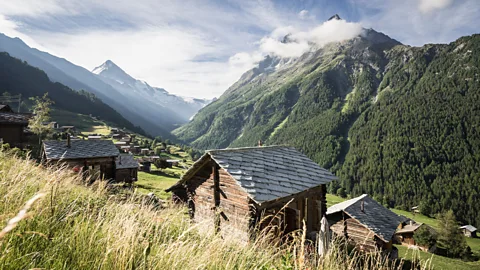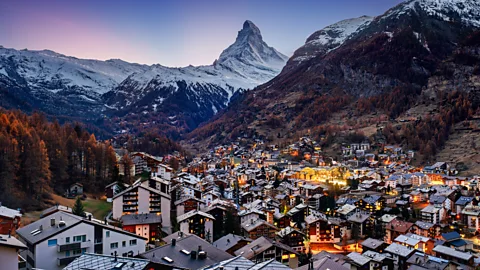Stadels: The age-old barns that fed the Alps
 Nicolas Sedlatchek
Nicolas SedlatchekLong before the Swiss Alps became known as a skiing and hiking destination, ingeniously designed stilted barns sustained entire communities.
Blackened by the sun, stilted pitched-roof barns seemingly floated above the flower-strewn meadows, framed by the Matterhorn, Switzerland's famed pyramidical peak. On closer inspection, I discovered the barns' facades were festooned with weather-worn scythes, pitchforks and even a toboggan-like contraption used to transport hay.
These centuries-old stadels (grain-storage barns) are an intrinsic part of the landscape and still freckle the landlocked country's high alpine valleys. Many of them are located in Zermatt, a resort town located in southern Switzerland's Valais region, and the barns have borne witness to the monied ski and hiking destination's humble beginnings as a farming community. Beyond their rural romanticism, these monuments to the past served a very practical purpose: to feed self-sustaining mountain communities.
 Sarah Freeman
Sarah Freeman"I look at the stadels and I think, 'How romantic, and [what] a hard life'," said Zermatt-born Linda Biner. Her nonagenarian father, Thomas Biner, nodded knowingly from his rocking chair, telling me, "There was no rice in Switzerland back then."
At just 14 years old, he recalled hiking over Zermatt's 3,300m-high Theodul to Italy's Aosta Valley to trade tobacco for the prized grain. "My [widowed] mother had six children, four cows, three goats and not a penny," he continued. Far from being shackled to the stove, women toiled the land too, even braving avalanche paths to tend to their livestock.
From the age of eight, Thomas learned to milk cows on Zermatt's high pastures. Summers were spent sleeping on a bed of straw (used as winter fodder for the animals) in the upper part of the family's two-storey stable, known as a gädi. This simple yet ingenious construction kept him warm by harnessing heat from the cattle below.
Moving in sync with the seasons wasn't just a way of life, but a means of survival. It goes to explain the strategic placement of these traditional gädis and stadels, which tumble down from the steep slopes to the undulating meadows below. Zermatt (which translates as "by or on the meadow") was originally a handful of hamlets scattered over some 60,000 acres.
 Jordan Lye/Getty Images
Jordan Lye/Getty ImagesThe Biner family owned 10 barns just for stockpiling rye. Nicknamed "the sleeping grain" by Alpine farmers, it would hibernate under the first flush of snow after being sown in September, and was hand-cut the following August to be hoarded for the long winter ahead. Pest and damp-proofing the precious cereal was another matter. Farmers' canny solution was to elevate their granaries several feet above the ground on mushroom-like stilts topped with huge circular slabs of locally sourced schist rock. The barns' rose-hued, resin-rich timber was felled from local larch that's particularly resistant to rye-loving rodents, that are repelled by its strong scent.
The distinctive silhouette of these age-old grain barns even inspired the logo for Zermatt's 3.7km-long Culture Trail. Inaugurated in 2019, the trail steadily climbs 300m from the town centre to Zmutt, one of the Alps' earliest-built hamlets.
"I was thinking one day, where are the oldest buildings [in the valley]">window._taboola = window._taboola || []; _taboola.push({ mode: 'alternating-thumbnails-a', container: 'taboola-below-article', placement: 'Below Article', target_type: 'mix' });
